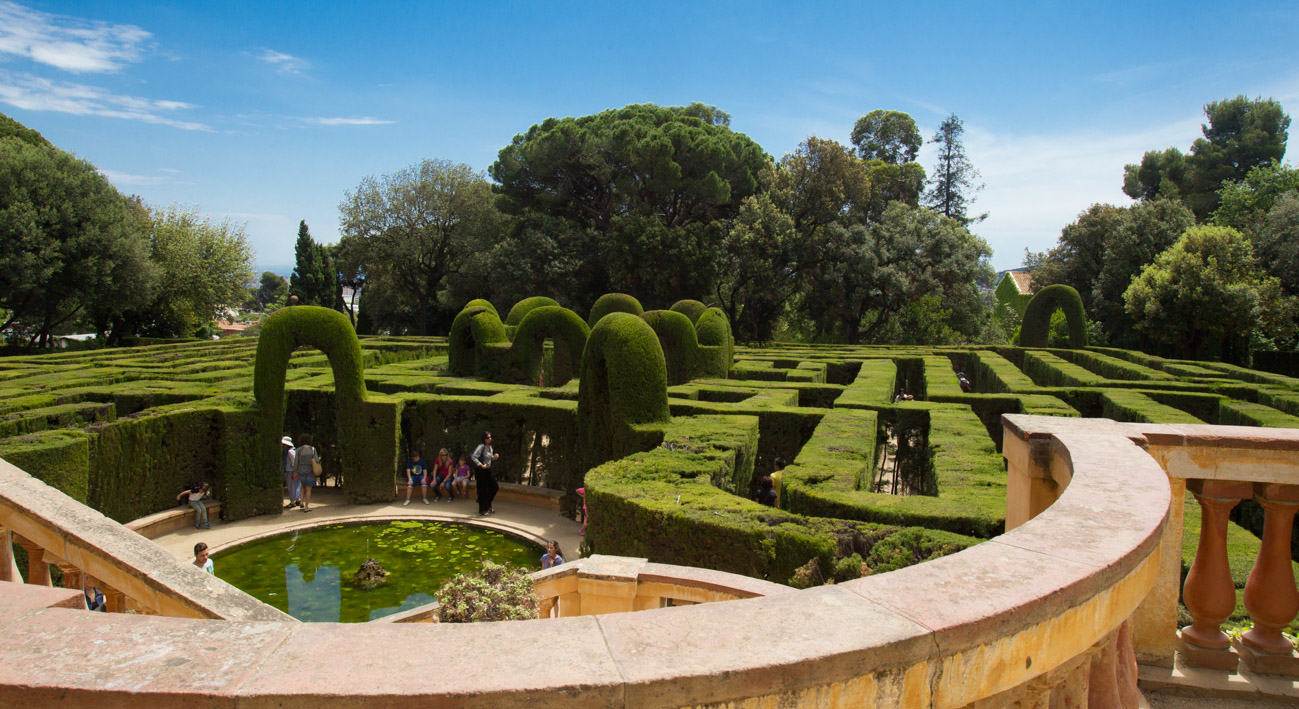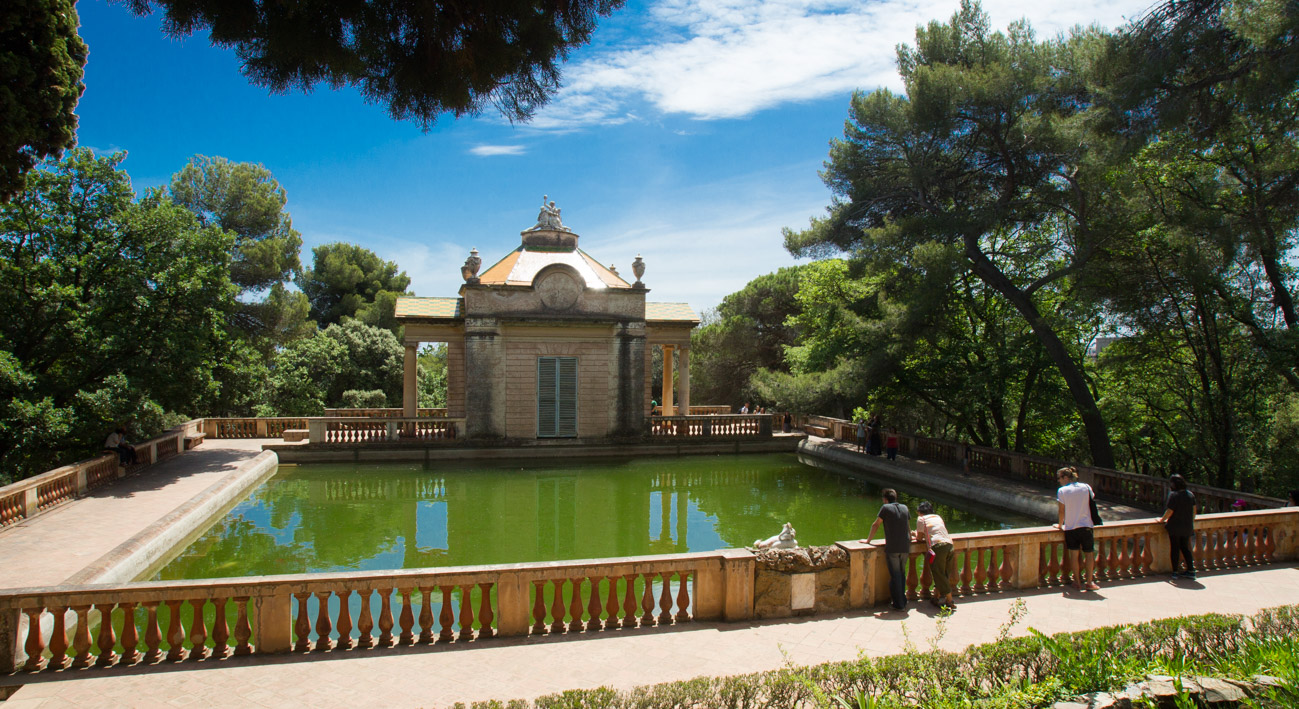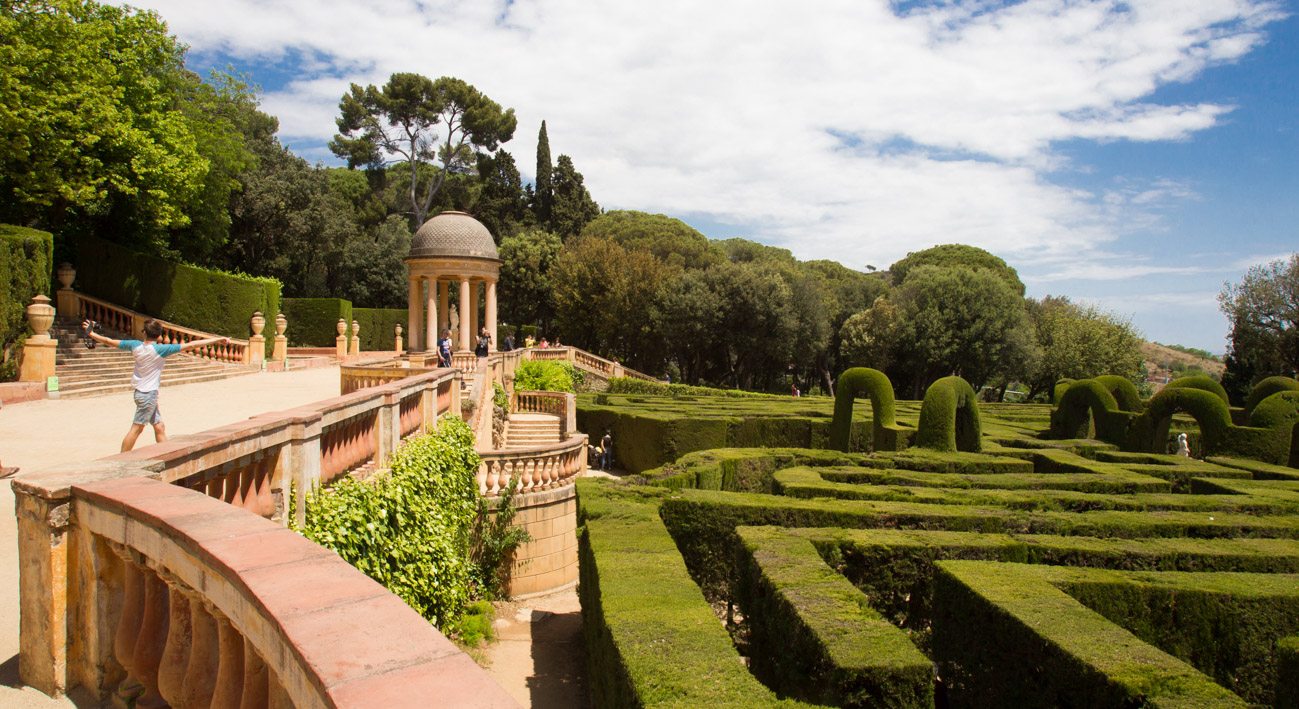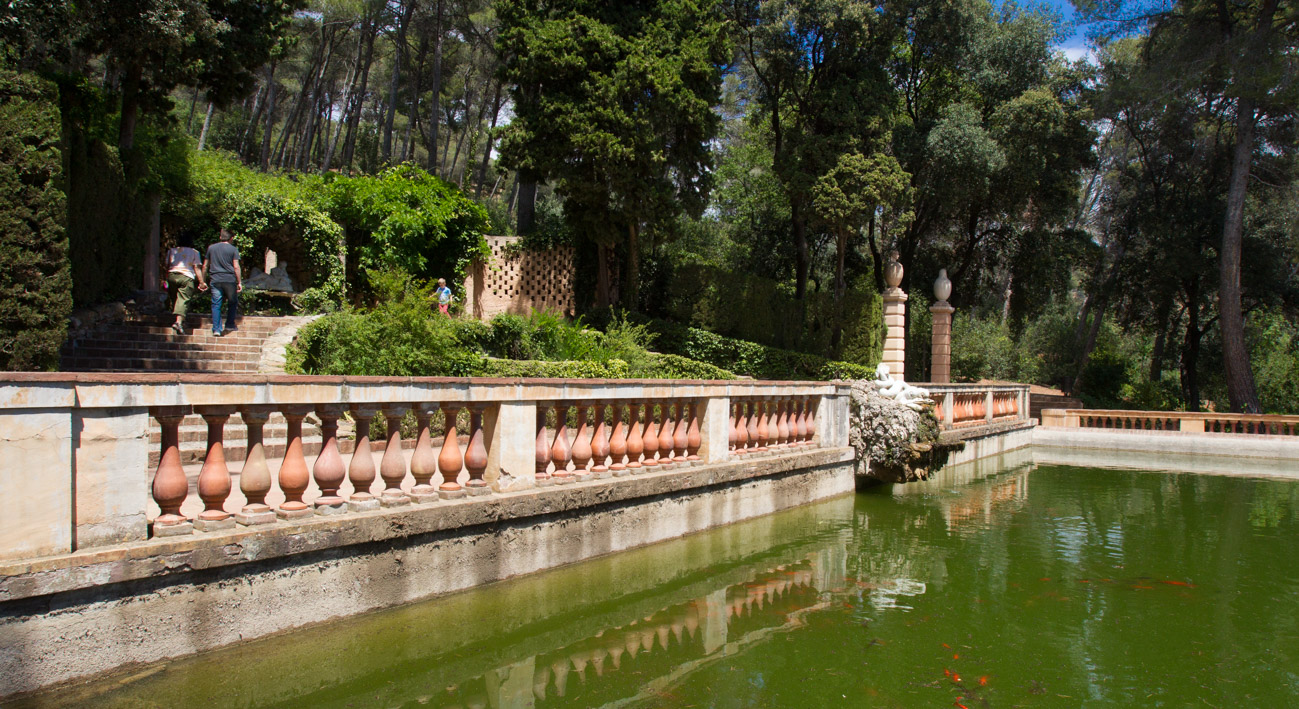A partir de març de 2025, i durant un any aproximadament , el laberint vegetal del parc del Laberint està tancat pels treballs de millora (renovació de tots els xiprers, millores del paviment, sistema de reg més sostenible, etc). La resta del parc resta obert per la seva visita
Every doubt is a labyrinth. Decisions, hypotheses and theories are paths for finding solutions, with every shortcut opening up a new point of view. Think about that as you try to work your way deep into the park’s labyrinth, made from wide, domesticated cypress hedges. If you reach the centre without finding the heart the park will have robbed you of, go and ask Eros where you can get it back. His sculpture stands smack in the middle of the labyrinth. Once you are back in the world, you can face the second challenge: Is this a Neoclassical or Romantic garden?

History
The park occupies the land of an estate once owned by the Marquis of Llupià, Poal and Alfarràs, a very enlightened man who gave the project to the Italian Domenico Bagutti, who worked on until 1808. A French gardener Delvalet was put in charge of the plantations, while the Catalan master builder Jaume Valls supervised the work. The Desvalls family remained the owners of the estate right up to the 1970s, when it was acquired by the City Council. It was officially opened as a public park in 1971. A complete overhaul followed in 1994 which changed its concept to that of a museum garden.

Art and Architecture
A Romantic or a Neoclassical garden? There are arguments for both. On the one hand, symmetry, topiary art and regular landscaping, small temples with Tuscan columns, fountains and fountain jets, sculptures based on mythology and a Neoclassical pavilion dedicated to the muses. On the other, the sound of the water falling freely into a waterfall and a stream over a stone bed, moss and forest plants, a wilder and shadier garden, covered in ivy and African lilies, an irregular layout of trees consisting of European yews, pine trees, plane trees and large lime trees and even a false cemetery. Orderly and whimsical greenery, nature tamed and free. These are the elements that mark out the various stages in the growth of a park originally created in the Neoclassical style, in 1791, but which grew and adopted the Romantic style in 1853.
-
- Phone number
- Tel.: 010
-
- Accessibility
- Accessible for people with physical disabilities
- Address:
- Passeig dels Castanyers, 1
- Districte:
- Horta-Guinardó
- Neighborhood:
- Montbau
- City:
- Barcelona
Timetable
| Periode | Dies | Hores | Preus |
|---|---|---|---|
| De l'1 April al 31 October | Tots els dies | de 10:00 h a 20:00 h | Entrada general: 2.23 € Reduïda: 1.42 € - Persones amb discapacitat - Carnet Jove - Menors de 14 anys Grups(+ 15 pers.): 10% descompte sobre el preu de l'entrada Gratuït: - Diumenges - Dimecres - Veïns - Aturats - Jubilats - Menors 5 anys |
| De l'1 November al 31 March | Tots els dies excepte 25 de desembre |
de 10:00 h a 18:00 h | |
| 25 de desembre | de 10:00 h a 14:00 h |
No es fan reserves.
Les entrades es deixen de vendre 1 hora abans del tancament del parc-
El pagament de l’entrada al parc del Laberint només es podrà efectuar amb targeta de crèdit. No es podrà pagar amb cap altre mitjà.
Hora de tancament aproximada, en funció de l'horari solar (tanquen quan es fa fosc,
al capvespre.
Prohibit l'accés al recinte a vehicles (incloses bicicletes, patins), pilotes o menjar.
No es permet l'entrada d'animals de companyia.
Entrada gratuïta pels veïns del Districte d'Horta, aquest veïnatge s'acredita amb el DNI a l'entrada del Parc.
Els dies amb entrada gratuïta (diumenges i dimecres), el número de visitants és limitat per controlar l'accés. Per concertar les visites guiades per a escolars cal consultar el web www.bcn.cat/educacio/pae
- Sections of this equipment
- Àrea de joc infantil
- Palau del marquès d'alfarràs
- Àrea de joc infantil
- Wc públic
Informació d'interès:
· Accés al jardí museu de pagament. No s'admeten reserves.· El jardí domèstic està tancat al públic. · Recinte accessible per a persones amb mobilitat reduïda.· Aforament limitat a 750 visitants. S'aconsella que els dies d'entrada gratuïta o gran afluència de públic, els visitants no superin els 60 minuts d'estada per garantir l'accés a tothom d'entrada gratuïta o gran afluència de públic.· No es permet l'entrada d'animals de companyia.· Prohibit l'accés al recinte a vehicles (incloses bicicletes, patins), pilotes o menjar.
El Parc del Laberint d'Horta és un jardí-museu que ocupa els terrenys d'una finca del marquès de Llupià, al Districte d'Horta-Guinardó. L'obra es va encarregar a l'italià Domenico Bagutti, mentre que jardiner francès Delvalet va ser el responsable de les plantacions i el català, Jaume Valls, en va supervisar els treballs. És avui un exponent de jardí neoclàssic del segle XVIII amb un toc de fisonomia italiana. Es va inaugurar com a parc públic municipal l'any 1971. El 1994 se'n va fer una restauració en profunditat que en va transformar la concepció a la categoria de jardí històric. Destaca el jardí domèstic, el jardí romàntic, el laberint, les nombroses instal·lacions d'aigua i els exemples d'escultura que acull. A tocar dels jardins destaca l'equipament municipal de formació en jardineria "Centre de Formació del Laberint" i la Biblioteca del centre de Formació del Laberint.





